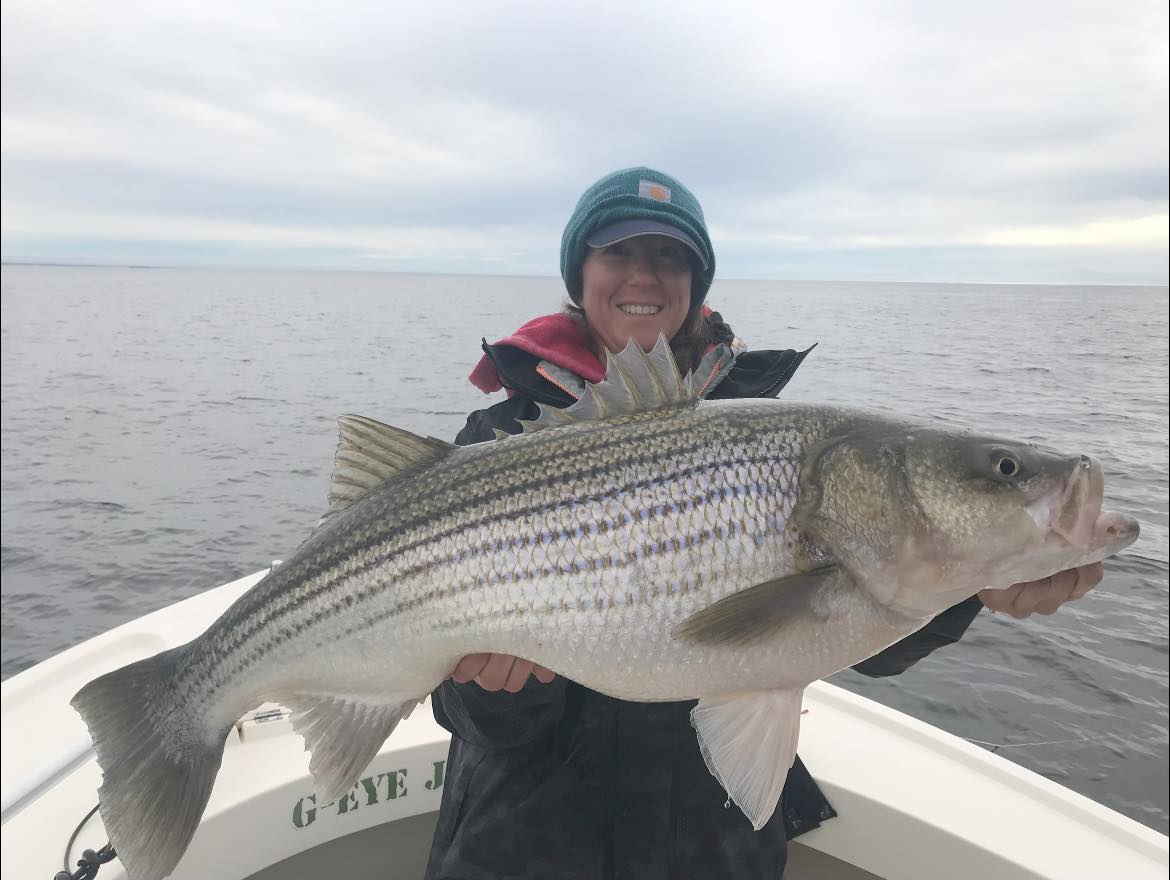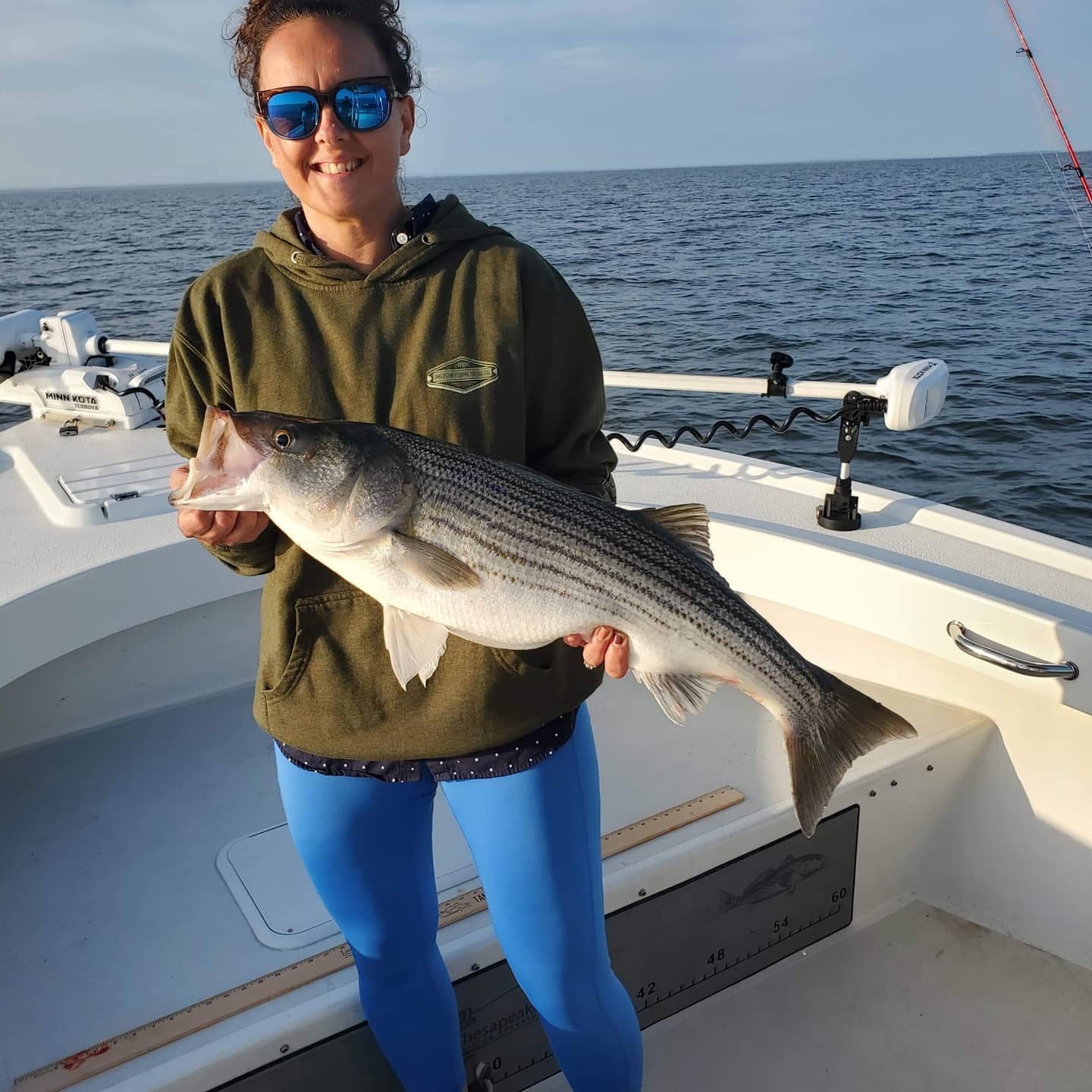As concerns about low striped bass numbers continue, the Atlantic States Marine Fisheries Commission (ASMFC) on May 1 took additional steps to address the number of striped bass dying after being caught and released, as well as unsustainable commercial fishing rates.
The ASMFC’s Striped Bass Management Board voted to establish a workgroup to explore options to reduce the significant number of striped bass that die after being caught and released. The workgroup will explore the effectiveness of season closures, the impacts of different types of fishing tackle, and the reduction in fishing effort needed to reduce striped bass losses. Following the workgroup’s report, which is expected in October this year, further action on catch and release mortality will likely follow.
The Board also approved plans by Maryland and the Potomac River Fisheries Commission to reduce their commercial harvest. At the ASMFC’s January meeting these plans were found to be inconsistent with the requirements of the Striped Bass Management Plan.
This week’s actions are intended to get efforts to rebuild this iconic species back on track.
“We must all face the hard truth that striped bass are struggling,” said CBF Maryland Executive Director Allison Colden. “We’re seeing continued low juvenile striped bass numbers, dwindling commercial catch, and a trend of fewer large citation-sized fish caught by anglers. Without getting striped bass management back on track across all sectors – commercial and recreational – there might not be a striped bass fishery in the future.”
Recreational fishing harvest of striped bass increased in 2022 along the Atlantic Coast even as managers implemented new harvest regulations. This significantly decreased the possibility of the striped bass population recovering to sustainable levels by a 2029 goal. Compounded with low numbers of young striped bass, this rang alarm bells for anglers, watermen, and fisheries managers.
To meet an ASMFC requirement with a May 1 deadline, earlier this year all Atlantic Coast states including Maryland, Potomac River Fisheries Commission, and Virginia implemented a one-fish limit for recreational anglers. In the Chesapeake Bay, fish kept must measure between 19 inches and 24 inches, while along the Atlantic Coast they must be between 28 inches and 31 inches.
The limits on bigger fish are especially important to rebuild the population as a recent Maryland DNR study shows that older, larger female striped bass produce far more eggs.
Maryland this year also implemented emergency regulations to prohibit fishing for striped bass during crucial spring spawning times between April 1 and May 15. The state has also closed fishing for striped bass during two weeks in late July, when stressed striped bass are most likely to die after being released. In Virginia, striped bass fishing is off-limits to anglers during spawning periods and between June 15 and October 4.
States also implemented a 7 percent reduction in the commercial harvest. Despite the commercial fishery comprising a smaller percentage of the total harvest, the dire status of striped bass requires conservation actions from all sectors who benefit from this shared resource. Commercial fishery reductions were necessary to ensure the greatest chance of achieving sustainable fishing rates.
Forty years ago, striped bass numbers reached a crisis point. Fishery regulators implemented a moratorium that shut down Maryland’s striped bass fishery from 1985 to 1989 and Virginia’s for one year in 1989. Striped bass numbers rebounded through the 1990s, and the 1980s moratorium is considered a major success story for fisheries management.
This year, the new striped bass limits intend to rebuild the striped bass stock before a moratorium becomes necessary.
There are many factors challenging the current recovery of striped bass, including overfishing, pollution and loss of habitat, climate change, and fish that die after being caught and released. New fishing limits are one of the most immediate, effective actions that can be taken to rebuild striped bass numbers.
A major concern has been the number of striped bass that die after they are caught and released, especially when the water is warm and holds less oxygen. When air temperatures are above 95 degrees, about 17 percent of shallow hooked striped bass died after being caught and released, according to a Maryland Department of Natural Resources study.
At its meeting this week, the ASMFC voted to form a recreational release mortality workgroup to develop possible solutions, including additional seasonal closures.
Anglers in Maryland and Virginia who care about the future of striped bass can take the following steps to ensure the future of Chesapeake striped bass:
- Avoid targeting striped bass during late June, July, and August, when high water temperatures stress fish and make them less likely to survive being caught. In Maryland, anglers can reference Maryland DNR’s Striped Bass Advisory Forecast to determine if it if air and water temperatures are safe to catch and release striped bass.
- Practice careful catch and release tactics to ensure fish survive, such as using barbless circle hooks, keeping fish in the water, and supporting fish with two hands if you must handle them.
- Fish for other species while striped bass stocks are low. The invasive blue catfish fishery is booming in Maryland and Virginia, as well as snakehead. The upper Bay and its tributaries are also prime for targeting pickerel, white perch, and yellow perch. In higher salinity areas, anglers can target cobia, red drum, speckled trout, Spanish mackerel, and many other species.
Unless a miracle occurs, I see another moratorium in our future.



No comments:
Post a Comment